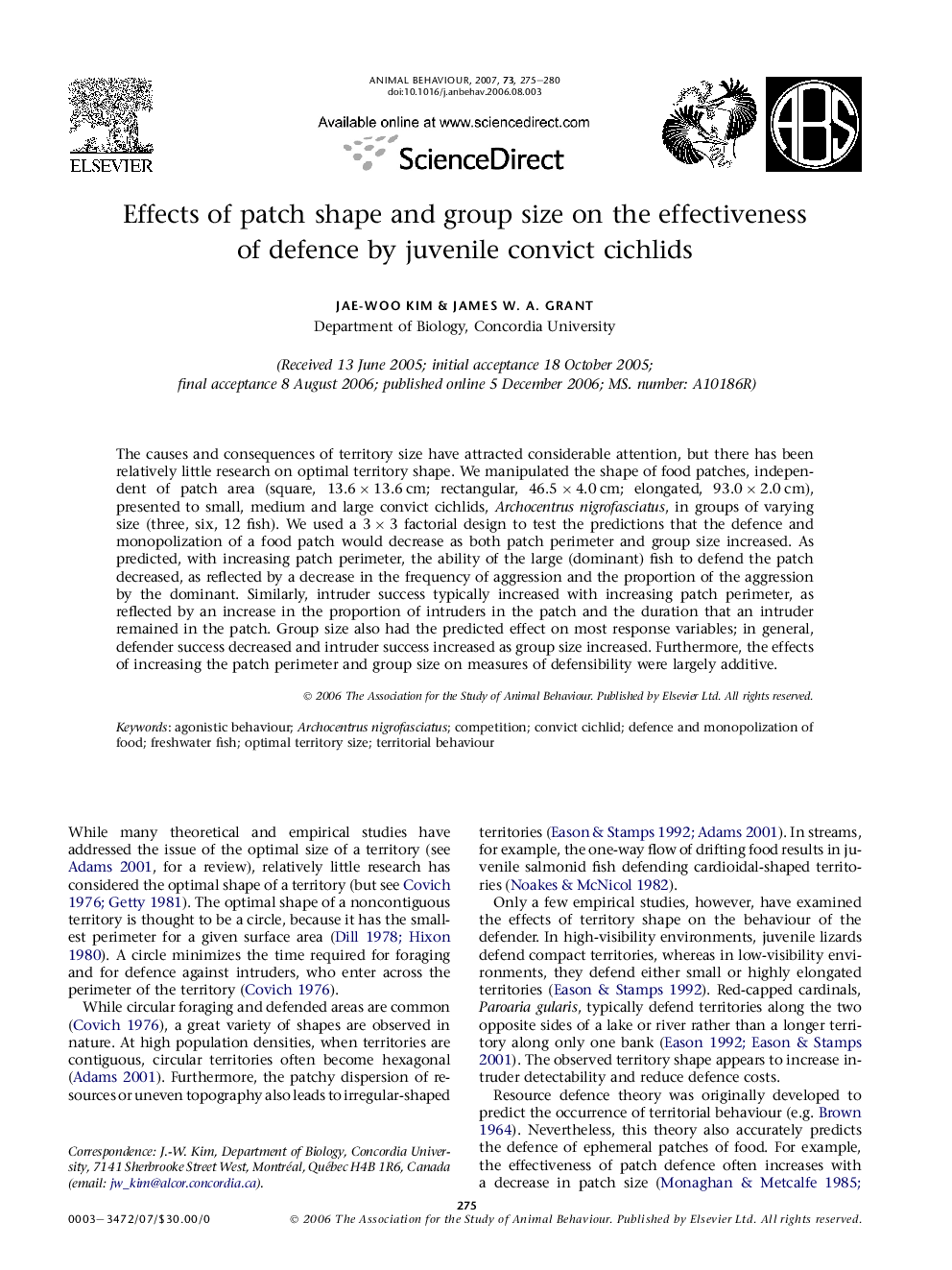| Article ID | Journal | Published Year | Pages | File Type |
|---|---|---|---|---|
| 2418129 | Animal Behaviour | 2007 | 6 Pages |
The causes and consequences of territory size have attracted considerable attention, but there has been relatively little research on optimal territory shape. We manipulated the shape of food patches, independent of patch area (square, 13.6 × 13.6 cm; rectangular, 46.5 × 4.0 cm; elongated, 93.0 × 2.0 cm), presented to small, medium and large convict cichlids, Archocentrus nigrofasciatus, in groups of varying size (three, six, 12 fish). We used a 3 × 3 factorial design to test the predictions that the defence and monopolization of a food patch would decrease as both patch perimeter and group size increased. As predicted, with increasing patch perimeter, the ability of the large (dominant) fish to defend the patch decreased, as reflected by a decrease in the frequency of aggression and the proportion of the aggression by the dominant. Similarly, intruder success typically increased with increasing patch perimeter, as reflected by an increase in the proportion of intruders in the patch and the duration that an intruder remained in the patch. Group size also had the predicted effect on most response variables; in general, defender success decreased and intruder success increased as group size increased. Furthermore, the effects of increasing the patch perimeter and group size on measures of defensibility were largely additive.
